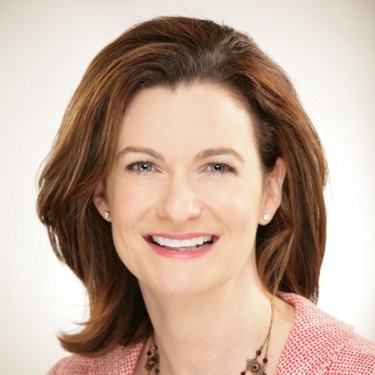During the 1980s, women focused on climbing the career ladder and the idea of having it all – career, husband, and children.  For women, the ‘70s were about working a job. During the 1980s, the focus was making a career. The ‘80s was the decade when women thought they could have it all – career, husband, and children. Most Americans were comfortable having female doctors, lawyers, mayors, and bosses, and the number of women attending college surpassed men. The decade also narrowed the wage inequality gap. In 1979, women made, on average, 58 cents for every dollar a man made. By 1994, the average woman made 72 cents for every dollar a man made.
For women, the ‘70s were about working a job. During the 1980s, the focus was making a career. The ‘80s was the decade when women thought they could have it all – career, husband, and children. Most Americans were comfortable having female doctors, lawyers, mayors, and bosses, and the number of women attending college surpassed men. The decade also narrowed the wage inequality gap. In 1979, women made, on average, 58 cents for every dollar a man made. By 1994, the average woman made 72 cents for every dollar a man made.
Women were still employed in traditionally low-salaried jobs such as clerical, service, or factories, but they were also moving into other segments. Some professions, such as construction, remained male-dominated. Ironically, the professions that had been open to women, such as teaching and nursing, suffered a decline in prestige during the 1980s.
For women climbing the corporate ladder at that time, their fashion choices emulated the men. Women wore power suits with shoulder pads. The suits and shoulder pads sent a message of strength and solidarity and, truthfully, made women’s waists appear smaller. In addition, exercise became in vogue, with Jane Fonda leading American women through aerobics classes. This was just one more responsibility that women added to their schedule to aim for perfection.
▶️▶️Read More: 10_Women’s Lib Movement and the Fight for Equal Rights
Television in the 1980s centered around primetime dramas with women working alongside men in hospitals, law firms, and police stations. Cagney and Lacey debuted in 1982 as the first television drama with two female leads. The biggest hit of the 80s was The Cosby Show, and Clair Huxtable embodied the ideal 80s woman. She had it all. She was an attorney, a mother of five, a loving wife, maintained a warm and beautiful home, and had a wonderful sense of humor. And what woman of the 80s was not inspired to have it all by the words from the Enjoli Perfume ad, “I’m a Woman: I can bring home the bacon, fry it up in a pan, and never let you forget you’re a man…”
 Giving 100% at Home and Work. Women of the 80s wanted all that their mothers had, plus more. They were encouraged to give 100% of themselves at work and 100% at home. Yet, this was not sustainable. Men began doing more housework and childcare during the 80s, but studies show that it was not significant.
Giving 100% at Home and Work. Women of the 80s wanted all that their mothers had, plus more. They were encouraged to give 100% of themselves at work and 100% at home. Yet, this was not sustainable. Men began doing more housework and childcare during the 80s, but studies show that it was not significant.
Sociologist Arlie Russell Hochschild studied the division of household chores in her 1989 book, The Second Shift. She concluded that while some men had stepped up their game, women performed approximately 15 more hours of household work per week or one additional month of work per year. When the activists of the 60s fought to liberate women, they envisioned a world with flexible workplaces where both partners could enjoy professional success, homes where both partners shared in the responsibilities, and a government or corporations that would provide childcare. However, they did not envision a world where everything would stay the same and women would have to do more to succeed.
The Chances of Having It All. For the generation of young women growing up in the 80s, “having it all” included getting married. In 1986, a Yale sociologist told a newspaper that there was a marriage shortage. He said female college graduates who remained unmarried until 30 had only a 20% chance of finding a husband. At 35 years, a 5% chance, and at 50, only a 1% chance. Newsweek made it a cover story and even joked that older women have a greater chance of being killed by a terrorist than getting married. Women were told they were too picky and to be concerned about their biological clocks. Later, it was found that the marriage study was flawed. In fact, just 5% of women ages 45 – 54 at that time had never married, the smallest proportion ever.
▶️ ▶️ Read More: 11_1970s: A Decade of Change
The fertility rate leveled off in the 1980s to an average of 1.8 children per woman, down from 3.8 in 1957. The rate among women ages 18 to 24 declined, and the rate for women over 30 jumped. Especially in the urban areas, women were waiting until much later to start a family. In 1982, Time Magazine’s cover celebrated motherhood after 30. However, that very same week, The New England Journal of Medicine reported that women’s chances of becoming pregnant after 30 dropped precipitously. It seemed women couldn’t win.
 The Fight Continues. Women in the 1980s tried to have it all, and they continued to fight for things they thought they had already won. Women fought to be partners or high-level executives. Women had shown they could competently perform the work but now had to fight individual battles in male-dominated worlds.
The Fight Continues. Women in the 1980s tried to have it all, and they continued to fight for things they thought they had already won. Women fought to be partners or high-level executives. Women had shown they could competently perform the work but now had to fight individual battles in male-dominated worlds.
Many women heard that they were not “feminine enough” or “too smart” as they were climbing the career ladders. They were also many men who were trying to push them down. It was not as easy as women had hoped it would be.
Women in the Workforce: We Can Do It!
Whether married or single, with children or not, working part-time, full-time, or even two jobs, as a stay-at-home mom or a community volunteer, American women can do it! Throughout history, American women always have. And I am so proud we do! Over the next few months, I will explore how topics about women in the workforce from the early 1900s until the present. Also, I want to note the changing trends of women in the workforce that this series contemplates will focus on white, middle-class women. Women of color have had very different experiences, and their work lives have been defined by racism, sexism, and financial necessity. I have pointed this out when possible, but please keep in mind that this series is not a complete picture of all women.
This is Part 12 of a 14-part series, Women in the Workforce: We Can Do It!, which explores topics related to the history, challenges, and accomplishments of working women in America. Topics to date include: 01_Women in the Workforce: We Can Do It!, 02_The War Opens the Doors for Working Women, 03_Rise of Jobs, Rise of Inequality, 04_Working Women and The Great Depression, 05 The Rise of Female Empowerment, 06_Stay Home or Be Paid Less 07_A Woman's Place, 08_The Myth of the Ideal Woman. 09_Is This All?,10_Women’s Lib Movement and the Fight for Equal Rights, and 11_1970s:ADecadeofChange
Propel HR President Lee Yarborough
 “My father, Braxton Cutchin, and I founded the company in 1996. After being in the PEO and HR world for 25 years, I have experienced firsthand the value we can provide to both the clients and the employees. It is truly a win for all parties. I’m proud to have helped establish Propel HR as an industry forerunner in the Southeast. There is nothing I love more than receiving phone calls from clients who seek my advice as a trusted advisor. This is a business where I feel that I can help others, and that is important to my own value.”
“My father, Braxton Cutchin, and I founded the company in 1996. After being in the PEO and HR world for 25 years, I have experienced firsthand the value we can provide to both the clients and the employees. It is truly a win for all parties. I’m proud to have helped establish Propel HR as an industry forerunner in the Southeast. There is nothing I love more than receiving phone calls from clients who seek my advice as a trusted advisor. This is a business where I feel that I can help others, and that is important to my own value.”
-- Lee Yarborough, President, Propel HR
Active in many professional and community organizations, Lee recently served as Chair of the Board of Directors of the National Association of Professional Employer Organizations (NAPEO). As NAPEO Chair, Lee focused on diversity and initiatives to deepen member relations. Under her leadership, she formed Women in NAPEO (WIN), a networking group designed to engage, empower, and encourage women working in the PEO industry. On the local level, Lee also served as the Chair of NAPEO’s Carolinas Leadership Council for more than a decade. In 2015, she was named a Fellow of the eleventh class of the Liberty Fellowship Program and a member of the Aspen Global Leadership Network.
An advocate for public education, Lee has served on the executive board as Chair of Public Education Partners and is the founder and director of Read Up Greenville, a young adult and middle grades book festival in downtown Greenville, SC.
When she breaks from board meetings, client visits, and networking, most likely, you will find Lee reading, camping, or spending time with her family. She also enjoys volunteering at her church and staying involved with her children's schools.
 About Propel HR. Propel HR is an IRS-certified PEO that has been a leading provider of human resources and payroll solutions for more than 25 years. Propel partners with small to midsized businesses to manage payroll, employee benefits, compliance and risks, and other HR functions in a way that maximizes efficiency and reduces costs. Visit our new website, www.propelhr.com.
About Propel HR. Propel HR is an IRS-certified PEO that has been a leading provider of human resources and payroll solutions for more than 25 years. Propel partners with small to midsized businesses to manage payroll, employee benefits, compliance and risks, and other HR functions in a way that maximizes efficiency and reduces costs. Visit our new website, www.propelhr.com.









